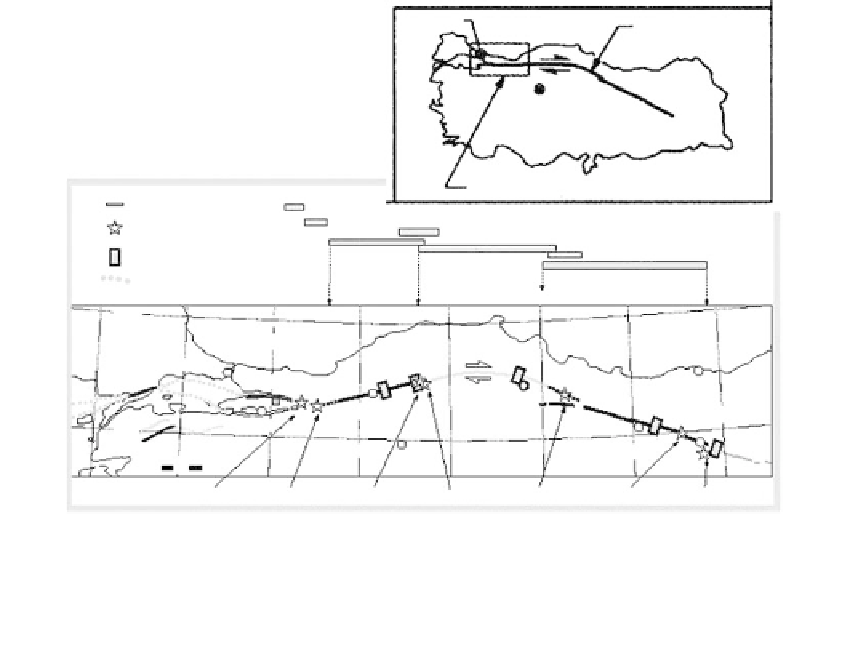Environmental Engineering Reference
In-Depth Information
Istanbul
North Anatolian
fault
Ankara
Area of map above
TURKEY
1967
1957
Seismic gap
1951
Epicenter
Trench by GSJ-MTA
Submarine fault
1944
1943
1942
1939
26
°
28
°
30
°
32
°
34
°
36
°
38
°
40
°
E
42
°
N
Black Sea
Istanbul
IIgaz
1912 (7.4)
Izmit
1999 (7.4)
Trabzon
Havza
Gerede
Erzincan
1953
(7.2)
Ankara
Susenri
0
100 km
1967 (7.1)
1957 (7.0)
1944 (7.3)
1943 (7.3)
1942 (7.1)
1939 (7.8)
1992 (6.8)
FIGURE 11.25
Rupture history of the North Anatolian Fault 1939-1967 and location of the 1999;
M
7.4, Izmit earthquake.
(After Okumura, K. et al., U.S.G.S. Open File Report, 94-568, 1993, pp. 143-144.)
deformation, such as faulting or folding. It is considered as capable if there is the presence
of surface or near-surface deformation of a recurring nature within the last approximately
500,000 years, or at least once in approximately the last 35,000 years; if there is a reason-
able association with sustained earthquake activity; or if there is a connection to a capable
tectonic source.
International Atomic Energy Commission
(IAEC) considers a fault capable if it has under-
gone movement in late Quaternary, if there is topographic evidence of surface rupture, if
there are instrumentally recorded and located events, if there is creep along the fault, or if
it is connected to a capable fault.
Japan grades active faults according to the amount of displacement per unit of time,
creep along the fault, movement during the Quaternary, and expected future movement.
Identification and Classification
External and internal evidence of faulting are described in
Section 6.5.3.
The general crite-
ria for recognition of an active fault are given in
Table 11.7,
the methods of dating the min-
imum age of the last fault displacement are listed in
Table 11.8,
and a system for the
classification of fault activity based on available data is given in
Table 11.9.
Instrumentation of fault movements is illustrated in
Figure 4.43.
Limitations in Identification
Stratigraphy
: In glaciated areas, it may be difficult to find a well-stratified Holocene sec-
tion older than 50,000 years; therefore, the favored approach of trenching to permit exam-
ination for bedding ruptures in Holocene strata may not be applicable. In addition, fault
displacement does not always extend to the surface; weathered rock and soil near the sur-
face can sometimes adsorb the slip. After the Alaska event (1964), locations were found


